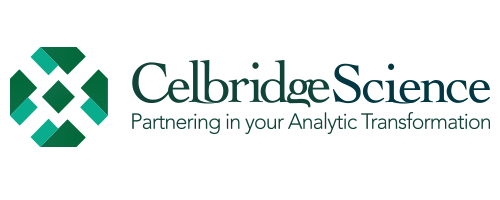
As many industries are utilizing analytical data to improve business practices, big data and data science career opportunities are exploding in parallel. The U.S. Bureau of Labor Statistics (BLS) reports that the demand for data science skills will drive a 27.9% rise in employment by 2026 and data science-related career is estimated to grow 11% from 2014 to 2024. The good news is that there are several paths that a data science career can take. The challenge is to understand how these careers differ and what kinds of skill sets are required individually for them.
The question now is, where and how to start?
J.P. Morgan –
“The first step towards getting somewhere is to decide you’re not going to stay where you are.”
But have you ever wondered what Data Science is? “Data Science is used by computing professionals having skills for collecting, shaping, storing, managing and analyzing data for organizations to leverage accurate data-driven decisions generating values”. Almost every interaction with technology includes data. Amazon purchases, Facebook feed, Netflix recommendations, and even the facial recognition required to sign in to your phone.
-
-
- First Step – The 3W. Where can your data science skills take your career? What job title is offered? Which path is right for you? A Data Scientist has many hats in his/her workplace. Not only are Data Scientists responsible for business analytics, but they are also involved in building data products along with developing visualizations and ML algorithms. Finding answers to these questions should be the first step in your data science journey. We can’t cover every potential job title, but we can surely find some leading roles in the data science universe and how they differ with the progression of a career in the field if you’re starting.
- Second Step – Choosing a Tool / Programming Language. The most probably question asked by the beginners. Straightforward answer: Any of the mainstream tool/languages. Tools are just a means for implementation; understanding the concept puts you a step ahead. But then also to give you an idea, start with the simplest or the most familiar or GUI based tools. Also, you should look into attributes like availability, cost, ease of learning, advancements in tools, support for data handling, etc. Currently, the two programming languages used widely are Python and R. In case if you are familiar with these languages you can prefer to skip this step.
- Third Step – Communicate with databases. If data science is the art, a database is an artist. Data is the heart of data science. Whenever you work on a data science project, you need to have data that can be analyzed, visualized to build a valid database. To do so and communicate with a database, you need to speak its language where SQL plays its part. A Structured Query Language used to communicate with a database. If you could design a simple database, then this will take you to the next level.
- Fourth Step – Understanding the Math. Math is the core of data science, without math no data processing can be taken forward. You need to understand the basics of probability theory, statistics, and linear algebra to comprehend data science. You not only need to understand how it works but also you need to know how and when to use it. Here are some useful courses you can enroll in and get your math solved. Data Science Math Skills, Mathematics for Data Science Specialization.
- Fifth Step – Collaboration & Interaction. Controlling versions across systems to track changes in the source code during the development and testing process. Git is used as a version control system to harmonize the group of programmers, developers, and testers. It allows you to coordinate among teams without needing to interact much with the command line via GitHub or GitLab.
- Sixth Step – Exploring Machine Learning. The fun part starts here. Relate what you have learned so far, discover and implement different Python and R packages using SciPy and NumPy. Here you’ll not only get to experience how data science works but also the impact it has on our daily lives.
- Seventh Step – Deep Learning. It is a subset of machine learning concerned with artificial neural networks, inspired by the structure and function of the human brain to learn from large amounts of data. Deep learning clarifies its actual usage when it comes to your daily life via Virtual assistants, Chatbots and service bots, Facial recognition, personalized shopping, and entertainment and to solve complex problems without human intervention.
Now you are almost at the finish line.
- Eighth Step- Natural language Processing (NPL). A branch of artificial intelligence that helps computers understands, interpret, and manipulate human language and processes via software. NPL includes Speech Recognition, Text To Speech Application, Sentiment Analysis, and Virtual Assistance like Google, Siri, Alexa, and other different kinds of conversation bots.
-
So here we reached our destination. You being a data scientist always need to be in a continuous stage of development and learning. This field is rapidly growing with new techniques, algorithms and research. The most important thing about this journey to know is that you can do it. You just need to dedicate yourself enough time, efforts and be open-minded to achieve your goals.




Recent Comments